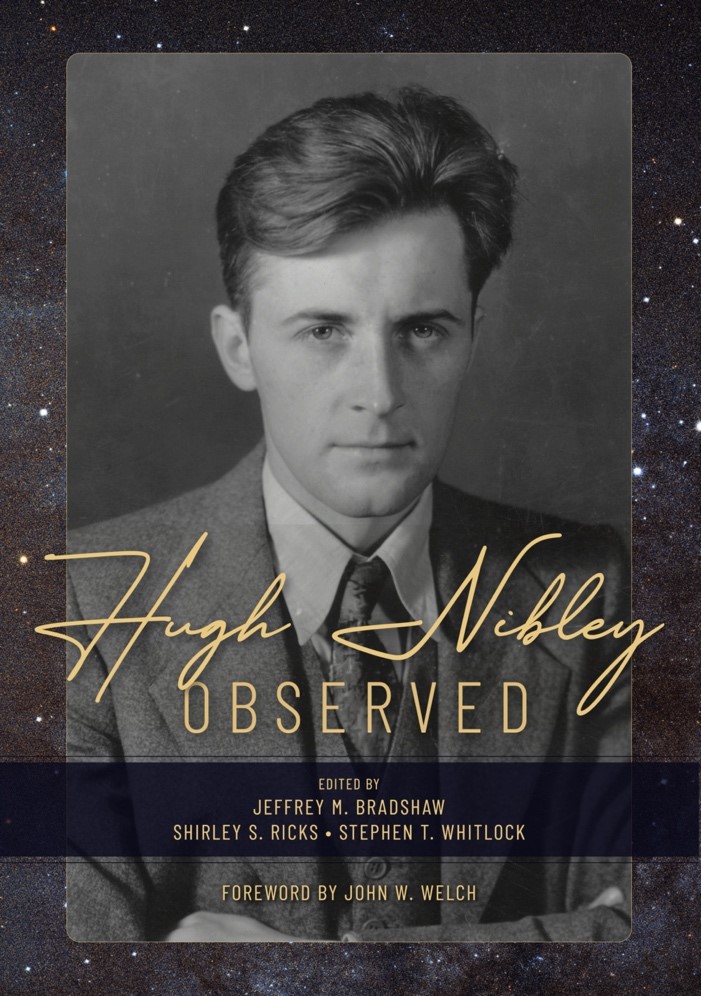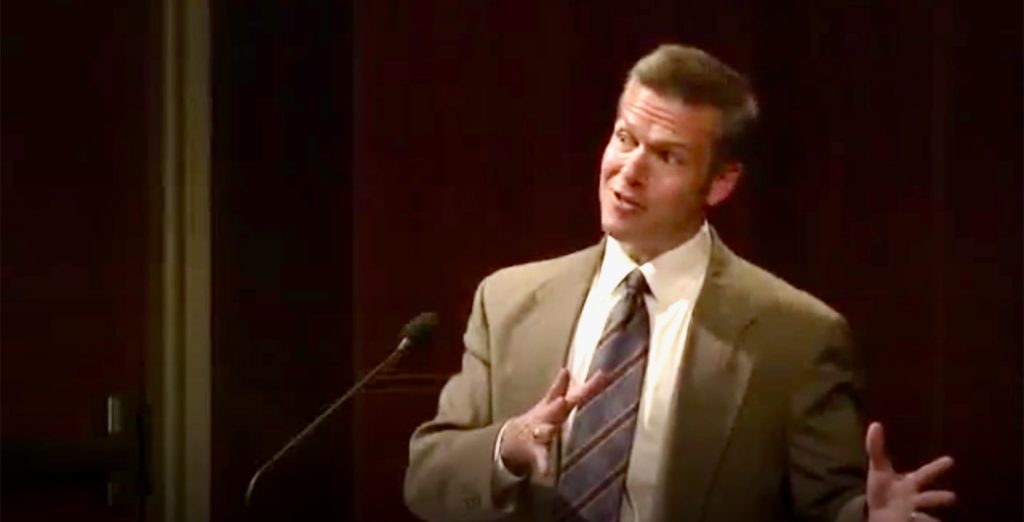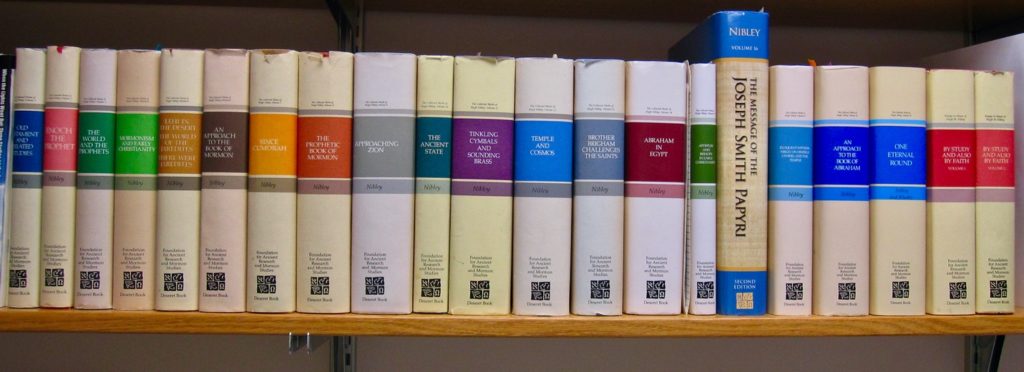Podcast: Download (11.5MB)
Subscribe: RSS
Post 1 | Post 2 | Post 3 | Post 4 | Post 5 | Post 6 | Post 7 | Post 8 | Post 9
Post 3 of 9
by Jeffrey M. Bradshaw

This is the third of nine weekly blog posts published in honor of the life and work of Hugh Nibley (1910–2005). The series is in honor of the new, landmark book, Hugh Nibley Observed, available in softcover, hardback, digital, and audio editions. Each week our post is accompanied by interviews and insights in pdf, audio, and video formats. (See the links at the end of this post.)
Hugh Nibley was a master at taking ancient history and applying its lessons to our day. One of the best examples of this is within his writings on revelation, reason, and rhetoric — or to use Greek equivalents: mantic, sophic, and sophistic views about how we come to know things.[1] Nibley’s perspectives are wonderfully summarized and discussed within BYU professor Eric Huntsman’s chapter of Hugh Nibley Observed.[2]

First, a little background on the subject:
- Mantic. The Greek word mantis means “prophet” — as a memory prompt, think of the praying mantis insect — literally a praying “prophet.” “The mantic worldview holds that there is absolute, unchanging truth, but we can’t arrive at it on our own. It needs to be revealed to us. Nibley proposes that the Greeks were, originally, a mantic society that believed in revealed truth.”[3] Though moderns often make light of ancient religions and their many gods, Nibley hesitated to do so, asserting that “it is high time we realized there must have been a solid body of fact behind the strange unwillingness of Greeks, Jews, and Egyptians to give up their Mantic addictions.”[4] What tied these diverse believers together was their hope or assurance of the reality of something beyond the sad world around them. Nibley believed that without an understanding of “the other world, or better, other worlds, … any true understanding of this life is out of the question.”[5]
- Sophic. “The prophets were followed, and largely replaced, by the Sophoi or ‘wise men.’ The Greek word for ‘wisdom’ is Sophia, and the Sophoi … were men who did not throw away prophets and revelation. They were simply so naturally or intuitively brilliant that they came upon wisdom on their own. … This embrace of truth, as discovered by mortals through their own intelligence, Nibley termed ‘the sophic worldview.’”[6]
- “The problem was in the next intellectual phase, which began with the rise of sophistry. Rather than having truth revealed to them or naturally coming to wisdom on their own, the Sophist freely created ‘truth.’ Their name come from sophistēs, which literally means ‘one who created or made up wisdom,’ or wisdom so-called.”[7] The Greek term is related to the modern conception of a “sophisticate.” Through the use of “rhetoric, the art of speaking persuasively,”[8] some of the sophistēs boasted that they could make false things look true. For example, Protagoras “could speak so persuasively that he could argue anything and make his listeners believe it.”[9]
Nibley found parallels between the ancient and modern abuses of rhetoric in many places. For instance, Huntsman writes: “For our politicians to speak persuasively to us, they (a) lie to us, (b) tell us what we want to hear, or (c) talk in short sound bites, giving snippets that the evening news can easily report.”[10] But Nibley reserves his own most biting prose, in this case applying rhetoric in the service of truth rather than falsehood, to the worlds of business and advertising. In 1978, Nibley wrote a preface to an article he wrote entitled “Victoriosa Loquacitas: The Rise of Rhetoric and the Decline of Everything Else,”[11] We quote from this preface, published for the first time in Hugh Nibley Observed:[12]
The disease our world is suffering from is not something peculiar to a uniquely scientific and permissive age, but the very same virus that has finished off all the other great societies of which we have record. The ancients called it Rhetoric. What it amounts to is the acceptance, for the sake of power and profits, of certain acknowledged standards of lying. …
Rhetoric … creates an unreal world — that is its great power, like the power of those idols of wood and stone whose appeal was precisely that they could not see or hear, but ever remained perfectly compliant to the wishes and purposes of their owners. As with a jet engine, the efficiency of rhetoric steadily increases as its surrounding element approximates more and more to a perfect vacuum. As it destroys the real world around it, the power of Rhetoric becomes ever more invincible, moving inexorably towards total supremacy in a total vacuum. We have almost reached that condition today, for some of our greatest fortunes and mightiest corporations are built not on secret formulas for cola drinks or hamburger patties, but on the conversion of those trifles into symbols of youth, beauty, health, super-fun, family togetherness — the soft caress of a child, the flag unfurled — that is what the rascals are selling, and it is the ultimate triumph of pure Rhetoric in the modern world.

Authentic knowledge, obtained both through “study and faith,”[13] is the only vaccine for sophistry. And Nibley’s immunity was in large measure due to his ability to hold the two desirable but sometimes competing worldviews in tension as both “a Sophic and a Mantic man”[14] — though, as his daughter Zina rightly avers “there was more to the mantic than the sophic”[15] in him. As Don Norton’s sums it up at the end of contribution:[16]
Nibley’s nineteen collected volumes contain a refreshing reminder of that there is to know about humans and their behavior, both good and bad, through their historical records. … [But] at the end of many of his lectures, he often offered very simple counsel to his audiences and readers: “Get a testimony. Find out form the Lord your calling in life. Confess your weaknesses before the Lord, and don’t forget to repent daily.”
***
We hope you will enjoy the video interview of Shirley S. Ricks embedded here, which you can view in either long or short form. Keeping with the theme this week of what Nibley knew about revelation, reason, and rhetoric, Shirley shares her firsthand experience as an editor for many of the nineteen volumes of the Collected Works of Hugh Nibley, and as co-editor of Hugh Nibley Observed.
In addition, this week’s Insight content outlines one of Hugh Nibley’s discoveries about the Atonement of Jesus Christ, as contained in the first of a four part series carried in the Church’s Ensign periodical in 1990. A short video entitled “Where Did the Idea That the Atonement is an “At-One-Ment” Come From?” is embedded below, along with a more complete podcast and pdf transcript that are available for listening or download.
Insight – “Where Did the Idea That the Atonement is an ‘At-one-ment’ Come From?” (PDF)
Insight – “Where Did the Idea That the Atonement is an “At-One-Ment” Come From?” (audio)
Insight video: “Where Did the Idea That the Atonement is an ‘At-One-Ment’ Come From?”
A Conversation about Hugh Nibley with Shirley S. Ricks (complete)
A Conversation about Hugh Nibley with Shirley S. Ricks (short)
References
Bradshaw, Jeffrey M., Shirley S. Ricks, and Stephen T. Whitlock, eds. Hugh Nibley Observed. Orem and Salt Lake City, UT: The Interpreter Foundation and Eborn Books, 2021.
Nibley, Hugh W. 1956. “Victoriosa Loquacitas: The Rise of Rhetoric and the Decline of Everything Else.” In The Ancient State: The Rulers and the Ruled, edited by Donald W. Parry and Stephen D. Ricks. The Collected Works of Hugh Nibley 10, 243-86. Salt Lake City and Provo, UT: Deseret Book and Foundation for Ancient Research and Mormon Studies, 1991. Reprint, Western Speech 20 (Spring 1956), 47-82.
———. 1963. “Paths that stray: Some notes on Sophic and Mantic.” In The Ancient State, edited by Donald W. Parry and Stephen D. Ricks. The Collected Works of Hugh Nibley 10, 380–482. Salt Lake City, UT: Deseret Book, 1991.
———. 1963. “Three shrines: Mantic, sophic, and sophistic.” In The Ancient State, edited by Donald W. Parry and Stephen D. Ricks. The Collected Works of Hugh Nibley 10, 311–79. Salt Lake City, UT: Deseret Book, 1991.
Notes
[1] See, e.g., J. M. Bradshaw et al., Hugh Nibley Observed; H. W. Nibley, Paths That Stray.
[2] J. M. Bradshaw et al., Hugh Nibley Observed, pp. 283–289.
[3] Ibid., p. 283.
[4] H. W. Nibley, Three Shrines, p. 319.
[5] Ibid., p. 316.
[6] J. M. Bradshaw et al., Hugh Nibley Observed, pp. 283–284.
[7] Ibid., p. 284.
[8] Ibid., p. 284.
[9] Ibid., p. 285.
[10] Ibid., p. 284.
[11] H. W. Nibley, Victoriosa Loquacitas.
[12] J. M. Bradshaw et al., Hugh Nibley Observed, p. 191.
[13] Doctrine and Covenants 88:118; 109:7, 14.
[14] H. W. Nibley, Three Shrines, p. 315.
[15] J. M. Bradshaw et al., Hugh Nibley Observed, p. 74.
[16] Ibid., pp. 708–709.
 Jeffrey M. Bradshaw (PhD, cognitive science, University of Washington) is a senior research scientist at the Florida Institute for Human and Machine Cognition (IHMC) in Pensacola, Florida (www.ihmc.us/groups/jbradshaw; en.wikipedia.org/wiki/Jeffrey_M._Bradshaw). His professional writings have explored a wide range of topics in human and machine intelligence (www.jeffreymbradshaw.net). Jeff has written studies on temple themes in the scriptures and the ancient Near East as well as commentaries on the Book of Moses and Genesis 1–11 (www.TempleThemes.net). Jeff was a missionary in France and Belgium from 1975 to 1977, and his family has returned twice to live in France. He is currently a vice president of the Interpreter Foundation, a service missionary for the Department of Church History with a focus on Africa, and a temple ordinance worker in the Meridian Idaho Temple. Jeff and his wife, Kathleen, are the parents of four children and fifteen grandchildren. From 2016 to 2019, they served missions in the Democratic Republic of Congo Kinshasa Mission office and the Kinshasa Democratic Republic of the Congo Temple. They now live in Nampa, Idaho.
Jeffrey M. Bradshaw (PhD, cognitive science, University of Washington) is a senior research scientist at the Florida Institute for Human and Machine Cognition (IHMC) in Pensacola, Florida (www.ihmc.us/groups/jbradshaw; en.wikipedia.org/wiki/Jeffrey_M._Bradshaw). His professional writings have explored a wide range of topics in human and machine intelligence (www.jeffreymbradshaw.net). Jeff has written studies on temple themes in the scriptures and the ancient Near East as well as commentaries on the Book of Moses and Genesis 1–11 (www.TempleThemes.net). Jeff was a missionary in France and Belgium from 1975 to 1977, and his family has returned twice to live in France. He is currently a vice president of the Interpreter Foundation, a service missionary for the Department of Church History with a focus on Africa, and a temple ordinance worker in the Meridian Idaho Temple. Jeff and his wife, Kathleen, are the parents of four children and fifteen grandchildren. From 2016 to 2019, they served missions in the Democratic Republic of Congo Kinshasa Mission office and the Kinshasa Democratic Republic of the Congo Temple. They now live in Nampa, Idaho.
